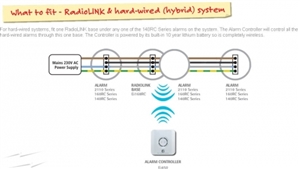AJJewsbury:
You'll often find PIRs operating all kinds of things in public toilets - not just lighting and fans, but frequently opening valves on the water supply - so for example urinals only flush after people have been present.
- Andy.
Sparkingchip:
Chris Pearson:
Or black, the old N, over-sleeved blue; and grey for switched line, over-sleeved brown. Same applies for 2-way lighting.No, that's not good practice, it may comply with the regulations, but is not considered correct as it is continuing the idea that black identifies the neutral.

Sparkingchip:
Indeed when wiring time controlled fans and the like with brown, black and grey only the grey needs over sleeving with blue, over sleeving the the black with brown is unnecessary, but it has become an accepted working practice to aid conductor identification.
If you think that switched line is an "other line conductor" by all means leave the sleeving off. However, if you feel that Table 51 applies, the conductor must be marked brown.
We're about to take you to the IET registration website. Don't worry though, you'll be sent straight back to the community after completing the registration.
Continue to the IET registration site